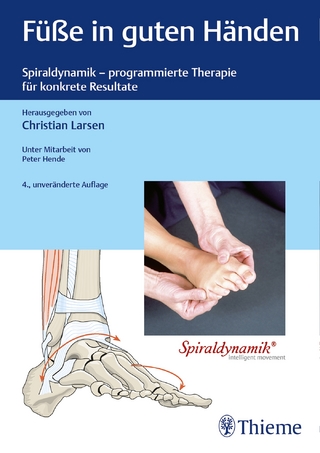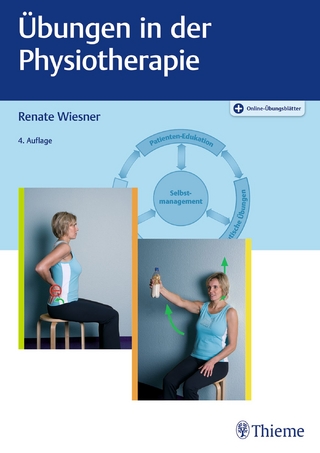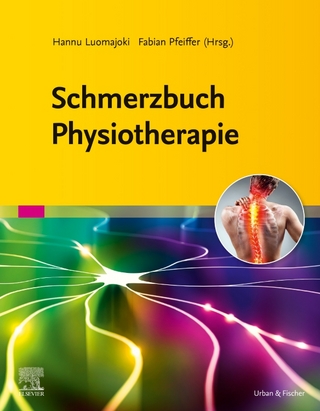
Biomaterials and Tissue Engineering in Urology
Crc Press Inc (Verlag)
978-1-4398-0177-2 (ISBN)
- Titel ist leider vergriffen;
keine Neuauflage - Artikel merken
An invaluable resource for clinicians as well as for researchers in materials and biomedical devices, this text summarizes recent research on the use of biomaterials and tissue engineering in the treatment of urological disorders. Part one reviews the fundamentals including biofilms and encrustation formation. Part two then discusses recent advances in biomaterials and the design of urological devices such as metal ureteral stents, self-lubricating catheter materials, and penile implants. The final section addresses urological tissue engineering, covering artificial and natural biomaterials, nanotechnology, and placental stem cells used for the regeneration of urological tissue and organs.
University of Western Ontario. Canada Wake Forest University, Winston-Salem, North Carolina, USA
PART
1 FUNDAMENTALS
Introduction to biofilms in urology, P Cadieux, G Wignall and R Carriveau, University of Western Ontario, Canada
Introduction.
What is a biofilm and why do they form?
Biofilm formation and
structure.
Biofilms in general medicine.
Biofilms in urology.
Biofilm shedding
and migration: infection spread and recurrence.
Resistance to host factors and
antibiotics.
Current and future biofilm prevention and treatment strategies.
Future trends.
Conclusions.
Sources of further information and advice.
References.
In vivo models for ureteral stents, M K Louie, A J Gamboa and R V Clayman, UCI Medical Center, USA
Introduction.
Commonly used animal models for ureteral stents.
Conclusions and
future trends. References.
Models for the assessment of biofilm and encrustation formation on
urological materials, B F Gilmore, D S Jones and S P Gorman, Queen’s University Belfast, Northern
Ireland; and H Ceri, University of Calgary, Canada
Introduction.
Development of urinary encrustation.
Assessment of biomaterial
encrustation: in vitro models.
Dynamic flow-through models.
Batch-flow or
`static’ models.
Dynamic continuous flow models.
The MBEC-BEST™ assay.
Conclusions.
References.
PART
2 MATERIALS AND DESIGN OF UROLOGICAL DEVICES
Ureteral stents: design and materials, D Lange and B H Chew, University of British Columbia, Canada
Introduction.
Current stent biomaterials.
Stent coatings.
Stent design.
Drug
eluting stents.
Conclusions and future trends.
References.
Metal stents in the upper urinary tract, E Liatsikos, D Karnabatidis, P Kallidonis and D Siablis, University of Patras,
Greece
Introduction.
Types of metal stents in the upper urinary tract.
Applications of
metal stents.
Insertion techniques.
Complications and problems.
Virtual
endoscopy and metal stents.
Extra-urinary drainage of the upper urinary tract.
Future trends.
References.
Coated ureteral stents, F Cauda, Ospedale Koelliker, Italy, V Cauda, Ludwig Maximilians Universität
München, Germany and C Fiori, Azienda Ospedaliero-Universitaria San Luigi
Gonzaga, Italy
Introduction.
Methods.
Results.
Discussion.
Conclusions.
Acknowledgement.
References.
Biofilm formation and catheter design, D J Stickler, Cardiff University, UK
Introduction.
Virulence factors.
Epidemiology of P. mirabilis infections.
The
process of crystalline biofilm formation on catheters.
Antimicrobials in the
prevention of catheter encrustation.
Factors that modulate the rate of P.
mirabilis biofilm formation on catheters.
Urease inhibitors.
Catheter design.
Future trends.
Conclusions.
Sources of further information and advice.
References.
Self-lubricating catheter materials, A D Woolfson, R K Malcolm, S P Gorman and S D McCullagh, Queen's University
Belfast, UK
Introduction.
Silicone chemistry.
Self-lubricating silicone biomaterials.
Performance characteristics of self-lubricating silicone biomaterials.
Bioactive
lubricious silicones.
Biomimetic lubricious silicones.
Toxicity and regulatory
issues.
Conclusions.
References.
Temporary urethral stents, T Tammela, Tampere University Hospital, Finland
Introduction.
Indications to use stents.
Nondegradable temporary urethral
stents.
Biodegradable urethral stents.
Future trends.
References.
Penile implants, G Brock, University of Western Ontario, Canada
Introduction.
Historical aspects of penile prosthesis development.
Biomaterials
in current use.
Device infection.
Erosion resistance.
Summary.
Future trends.
References.
PART 3 UROLOGICAL TISSUE ENGINEERING
Artificial biomaterials for urological tissue engineering, W A Farhat, The Hospital for Sick Children, Canada and P J Geutjes, Radboud
University Nijmegen Medical Centre, The Netherlands
Introduction.
History of artificial based biomaterials used in urology.
Synthetic scaffolds.
Smart biomaterials.
References.
Natural biomaterials for urological tissue engineering, C C Roth and B P Kropp, The University of Oklahoma Health Sciences Center
and E Y Cheng, Children's Memorial Hospital in Chicago, USA
Introduction.
Historical applications of natural biomaterials.
Fundamental
biomaterials.
Collagen based extracellular matrices.
Future trends.
Sources of
further information and advice.
References.
Nanotechnology and urological tissue engineering, B S Harrison and C Ward, Wake Forest Institute for Regenerative Medicine,
USA
Introduction.
Rationale for nanomaterials in engineering tissue.
Use of
nanomaterials as biomaterials.
Use of nanomaterials for aiding cell tracking.
Use of nanomaterials to improve drug delivery.
Conclusions.
Future trends.
Sources of further information and advice.
References.
Assessing the performance of tissue-engineered urological implants, G J Christ, D Burmeister, S Vishwajit, Y Jarajapu and K-E Andersson, Wake
Forest Institute for Regenerative Medicine, USA
Introduction.
The bladder.
Evaluation of engineered or regenerating tissues
in vitro.
Bladder tissue engineering and regeneration.
Conclusions and
future trends.
References.
Regenerative pharmacology and bladder regeneration, K-E Andersson and G J Christ, Wake Forest Institute for Regenerative
Medicine, USA
Introduction.
Endogenous bladder regeneration.
Construction of a tissue or
organ.
Development of an engineered bladder.
Implantation of the bladder
construct in preclinical studies.
Preliminary clinical experience with
neobladders.
Conclusions.
Acknowledgments.
References.
Autologous cell sources for urological applications, Y Zhang, Wake Forest Institute for Regenerative Medicine, USA
Introduction.
Fully-differentiated cells for urological reconstruction.
Stem
and progenitor cells for urological reconstruction.
Cell tracking technology.
Conclusions.
Acknowledgements.
References.
Embryonic stem cells, nuclear transfer, and parthenogenesis-derived stem
cells for urological reconstruction, R Dorin, J Yamzon, and C J Koh, Children’s Hospital Los Angeles and USC Keck
School of Medicine, USA
Introduction.
Principles of tissue engineering.
Stem cells overview.
Embryonic
stem cells.
Nuclear transfer.
Parthenogenesis.
Induced pluripotent stem cells.
Conclusions and future trends.
References.
Amniotic fluid and placental stem cells as a source for urological
regenerative medicine, P De Coppi, UCL Institute of Child Health and Great Ormond Street Hospital,
UK, Azienda Ospedaliera Università di Padova, Italy, G Bartsch, University of
Ulm, Germany and A Atala, Wake Forest Institute for Regenerative Medicine, USA
Introduction.
Amniocentesis.
Differentiated cells from amniotic fluid.
Mesenchymal stem cells from amniotic fluid.
Amniotic fluid-derived stem cells.
Conclusions.
References.
The use of adipose progenitor cells in urology, D S Davé and L V Rodríguez, University of California Los Angeles, USA
Introduction.
Nomenclature and origin of adipose progenitor cells.
Isolation
procedures.
Molecular characterization.
Differentiation capacity of
adipose-derived stem cells.
Applications in the field of urology.
Future
trends.
References.
Regenerative medicine of the urinary sphincter via an endoscopic approach, M C Smaldone, University of Pittsburgh School of Medicine and M B
Chancellor, William Beaumont Hospital, USA
Overview.
Introduction.
Neurophysiology of stress urinary incontinence.
Stem
cell source for the injection therapy of stress urinary incontinence (SUI).
Role of muscle-derived stem cells (MDSCs) in the delivery of neurotrophic
factors.
Injection technique.
Current results of clinical studies.
Conclusions.
References.
Regenerative medicine of the urinary sphincter via direct injection, R Yiou, CHU Henri Mondor, France
Introduction.
Challenges with muscle precursor cells (MPC) transfer.
The direct
myofiber implantation procedure.
Direct injection of muscle precursor cells
using minced muscle.
Conclusions and future trends.
References.
Regenerative medicine for the urethra, T Aboushwareb and A Atala, Wake Forest Institute for Regenerative Medicine,
USA and A ElKassaby, Shams University, Egypt
Introduction.
Synthetic scaffolds.
Biologic (natural) polymers.
Acellular
dermal matrix.
Cadaveric fascia lata.
Amniotic membrane.
Small intestinal
submucosa.
Bladder acellular matrix graft.
Conclusions.
Acknowledgement.
References.
Penile reconstruction, H-J Wang and J J Yoo, Wake Forest Institute for Regenerative Medicine, USA
Introduction.
Basic principles of penile tissue engineering.
Engineering of
functional corporal tissue.
Engineered penile prosthesis.
Reconstruction of the
tunica albuginea.
Summary and future trends.
Acknowledgment.
References.
Tissue engineering in reproductive medicine, A Sophonsritsuk and C E Bishop, Wake Forest Institute for Regenerative
Medicine, USA
Tissue engineering of the vagina.
Methods of vaginal tissue reconstitution.
Tissue engineering of the uterus.
Methods of uterine tissue reconstitution.
Tissue engineering of the ovarian tissue.
Method for culturing follicles.
Conclusions.
Acknowledgement.
References.
Regenerative medicine of the kidney, N Guimaraes-Souza, R Soler and J J Yoo, Wake Forest Institute for
Regenerative Medicine, USA
Introduction.
Basic components of renal tissue engineering.
Approaches for the
regeneration of renal tissue.
Cell based therapy for kidney disease.
Summary.
Acknowledgement.
References.
Stem cells and kidney regeneration, S Sedrakyan, L Perin and R E De Filippo, University of Southern California,
USA
Introduction.
Endogenous stem cells.
Exogenous stem cells.
Conclusions.
References.
| Erscheint lt. Verlag | 1.6.2009 |
|---|---|
| Verlagsort | Bosa Roca |
| Sprache | englisch |
| Maße | 152 x 229 mm |
| Gewicht | 998 g |
| Themenwelt | Medizin / Pharmazie ► Physiotherapie / Ergotherapie ► Orthopädie |
| Technik ► Medizintechnik | |
| ISBN-10 | 1-4398-0177-0 / 1439801770 |
| ISBN-13 | 978-1-4398-0177-2 / 9781439801772 |
| Zustand | Neuware |
| Haben Sie eine Frage zum Produkt? |
aus dem Bereich


